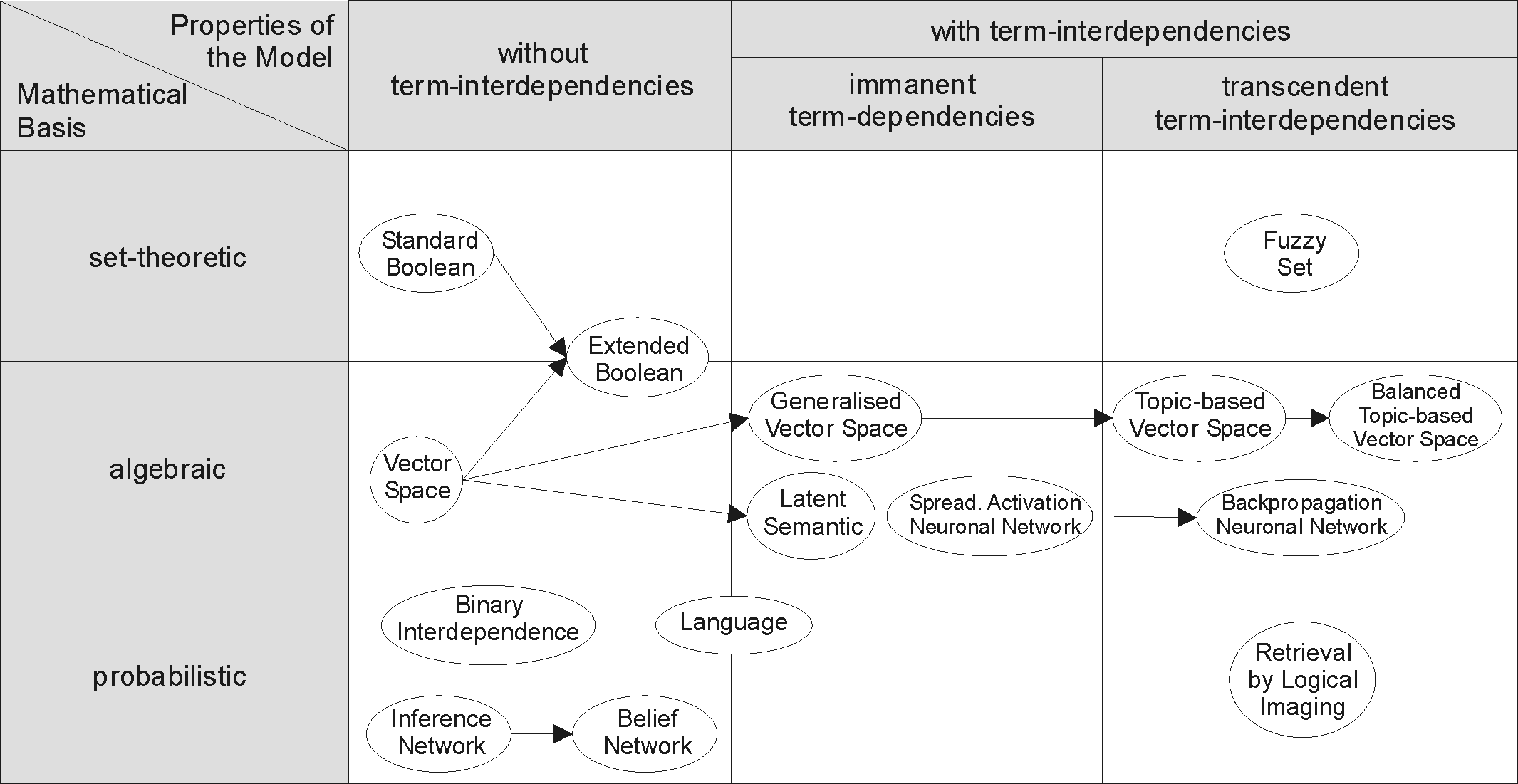|
Splade
Learned sparse retrieval or sparse neural search is an approach to Information Retrieval which uses a sparse vector representation of queries and documents. It borrows techniques both from lexical bag-of-words and vector embedding In natural language processing, a word embedding is a representation of a word. The embedding is used in text analysis. Typically, the representation is a real-valued vector that encodes the meaning of the word in such a way that the words that a ... algorithms, and is claimed to perform better than either alone. The best-known sparse neural search systems are SPLADE and its successor SPLADE v2. Others include DeepCT, uniCOIL, EPIC, DeepImpact, TILDE and TILDEv2, Sparta, SPLADE-max, and DistilSPLADE-max. There are also extensions of sparse retrieval approaches to the vision-language domain, where these methods are applied to multimodal data, such as combining text with images. This expansion enables the retrieval of relevant content across different ... [...More Info...] [...Related Items...] OR: [Wikipedia] [Google] [Baidu] |
Information Retrieval
Information retrieval (IR) in computing and information science is the task of identifying and retrieving information system resources that are relevant to an Information needs, information need. The information need can be specified in the form of a search query. In the case of document retrieval, queries can be based on full-text search, full-text or other content-based indexing. Information retrieval is the science of searching for information in a document, searching for documents themselves, and also searching for the metadata that describes data, and for databases of texts, images or sounds. Automated information retrieval systems are used to reduce what has been called information overload. An IR system is a software system that provides access to books, journals and other documents; it also stores and manages those documents. Web search engines are the most visible IR applications. Overview An information retrieval process begins when a user enters a query into the sys ... [...More Info...] [...Related Items...] OR: [Wikipedia] [Google] [Baidu] |
Bag-of-words Model
The bag-of-words (BoW) model is a model of text which uses an unordered collection (a "multiset, bag") of words. It is used in natural language processing and information retrieval (IR). It disregards word order (and thus most of syntax or grammar) but captures Multiplicity (mathematics), multiplicity. The bag-of-words model is commonly used in methods of document classification where, for example, the (frequency of) occurrence of each word is used as a Feature (machine learning), feature for training a Statistical classification, classifier. It has also been Bag-of-words model in computer vision, used for computer vision. An early reference to "bag of words" in a linguistic context can be found in Zellig Harris's 1954 article on ''Distributional Structure''. Definition The following models a text document using bag-of-words. Here are two simple text documents: (1) John likes to watch movies. Mary likes movies too. (2) Mary also likes to watch football games. Based on ... [...More Info...] [...Related Items...] OR: [Wikipedia] [Google] [Baidu] |
Vector Embedding
In natural language processing, a word embedding is a representation of a word. The embedding is used in text analysis. Typically, the representation is a real-valued vector that encodes the meaning of the word in such a way that the words that are closer in the vector space are expected to be similar in meaning. Word embeddings can be obtained using language modeling and feature learning techniques, where words or phrases from the vocabulary are mapped to vectors of real numbers. Methods to generate this mapping include neural networks, dimensionality reduction on the word co-occurrence matrix, probabilistic models, explainable knowledge base method, and explicit representation in terms of the context in which words appear. Word and phrase embeddings, when used as the underlying input representation, have been shown to boost the performance in NLP tasks such as syntactic parsing and sentiment analysis. Development and history of the approach In distributional semantics, a qu ... [...More Info...] [...Related Items...] OR: [Wikipedia] [Google] [Baidu] |
Okapi BM25
In information retrieval, Okapi BM25 (''BM'' is an abbreviation of ''best matching'') is a ranking function used by search engines to estimate the relevance of documents to a given search query. It is based on the probabilistic retrieval framework developed in the 1970s and 1980s by Stephen E. Robertson, Karen Spärck Jones, and others. The name of the actual ranking function is ''BM25''. The fuller name, ''Okapi BM25'', includes the name of the first system to use it, which was the Okapi information retrieval system, implemented at London's City University in the 1980s and 1990s. BM25 and its newer variants, e.g. BM25F (a version of BM25 that can take document structure and anchor text into account), represent TF-IDF-like retrieval functions used in document retrieval. The ranking function BM25 is a bag-of-words retrieval function that ranks a set of documents based on the query terms appearing in each document, regardless of their proximity within the document. It is a fa ... [...More Info...] [...Related Items...] OR: [Wikipedia] [Google] [Baidu] |
Creative Commons NonCommercial License
A Creative Commons NonCommercial license (CC NC, CC BY-NC or NC license) is a Creative Commons license which a copyright holder can apply to their media to give public permission for anyone to reuse that media only for noncommercial activities. Creative Commons is an organization which develops a variety of public copyright licenses, and the "noncommercial" licenses are a subset of these. Unlike the CC0, CC BY, and CC BY-SA licenses, the CC BY-NC license is considered non-free. A challenge with using these licenses is determining what noncommercial use is. Defining "Noncommercial" In September 2009 Creative Commons published a report titled, "Defining 'Noncommercial'". The report featured survey data, analysis, and expert opinions on what "noncommercial" means, how it applied to contemporary media, and how people who share media interpret the term. The report found that in some aspects there was public agreement on the meaning of "noncommercial", but for other aspects, there is ... [...More Info...] [...Related Items...] OR: [Wikipedia] [Google] [Baidu] |
